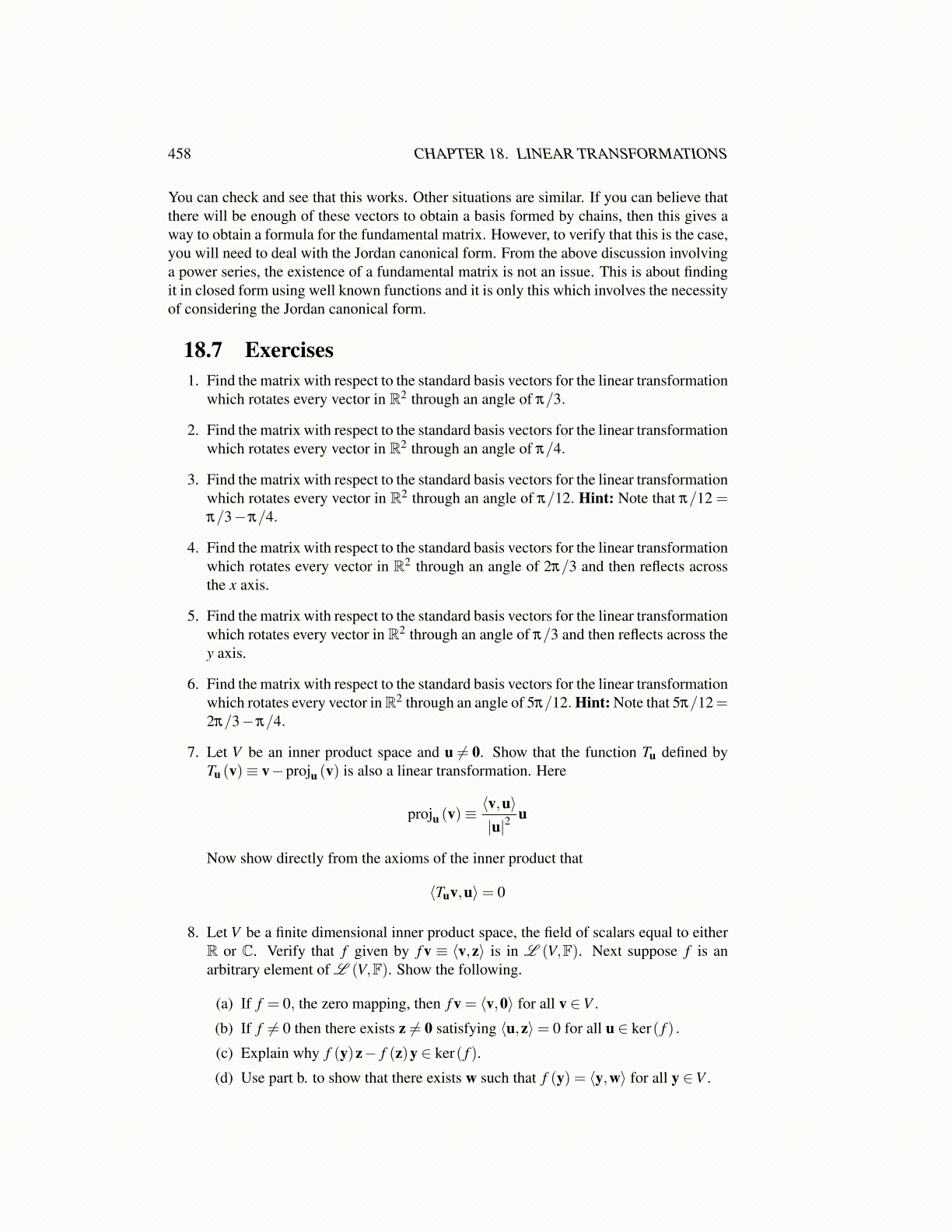
458 CHAPTER 18. LINEAR TRANSFORMATIONS
You can check and see that this works. Other situations are similar. If you can believe thatthere will be enough of these vectors to obtain a basis formed by chains, then this gives away to obtain a formula for the fundamental matrix. However, to verify that this is the case,you will need to deal with the Jordan canonical form. From the above discussion involvinga power series, the existence of a fundamental matrix is not an issue. This is about findingit in closed form using well known functions and it is only this which involves the necessityof considering the Jordan canonical form.
18.7 Exercises1. Find the matrix with respect to the standard basis vectors for the linear transformation
which rotates every vector in R2 through an angle of π/3.
2. Find the matrix with respect to the standard basis vectors for the linear transformationwhich rotates every vector in R2 through an angle of π/4.
3. Find the matrix with respect to the standard basis vectors for the linear transformationwhich rotates every vector in R2 through an angle of π/12. Hint: Note that π/12 =π/3−π/4.
4. Find the matrix with respect to the standard basis vectors for the linear transformationwhich rotates every vector in R2 through an angle of 2π/3 and then reflects acrossthe x axis.
5. Find the matrix with respect to the standard basis vectors for the linear transformationwhich rotates every vector in R2 through an angle of π/3 and then reflects across they axis.
6. Find the matrix with respect to the standard basis vectors for the linear transformationwhich rotates every vector in R2 through an angle of 5π/12. Hint: Note that 5π/12=2π/3−π/4.
7. Let V be an inner product space and u ̸= 0. Show that the function Tu defined byTu (v)≡ v−proju (v) is also a linear transformation. Here
proju (v)≡⟨v,u⟩|u|2
u
Now show directly from the axioms of the inner product that
⟨Tuv,u⟩= 0
8. Let V be a finite dimensional inner product space, the field of scalars equal to eitherR or C. Verify that f given by f v ≡ ⟨v,z⟩ is in L (V,F). Next suppose f is anarbitrary element of L (V,F). Show the following.
(a) If f = 0, the zero mapping, then f v = ⟨v,0⟩ for all v ∈V .
(b) If f ̸= 0 then there exists z ̸= 0 satisfying ⟨u,z⟩= 0 for all u ∈ ker( f ) .
(c) Explain why f (y)z− f (z)y ∈ ker( f ).
(d) Use part b. to show that there exists w such that f (y) = ⟨y,w⟩ for all y ∈V .